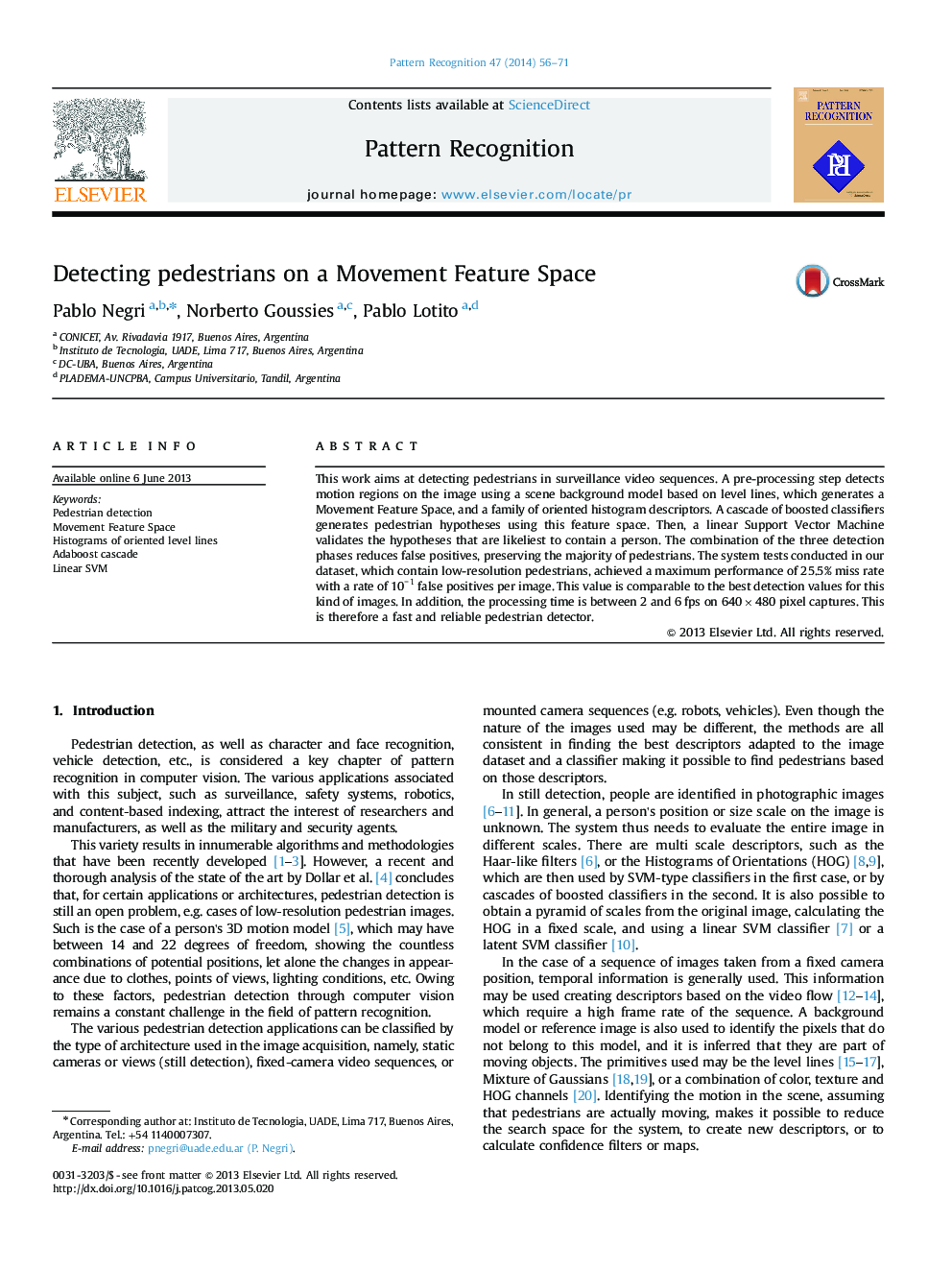| Article ID | Journal | Published Year | Pages | File Type |
|---|---|---|---|---|
| 532104 | Pattern Recognition | 2014 | 16 Pages |
•A Movement Feature Space generates oriented histogram family descriptors.•Detection system involves motion detection, hypothesis generation and validation.•A cascade of classifiers combine generative and discriminants functions.•Best result gives 25.5% of miss rate with 0.1 false positives per image.•Running time is between 2 and 6 fps in 640×480 frames size.
This work aims at detecting pedestrians in surveillance video sequences. A pre-processing step detects motion regions on the image using a scene background model based on level lines, which generates a Movement Feature Space, and a family of oriented histogram descriptors. A cascade of boosted classifiers generates pedestrian hypotheses using this feature space. Then, a linear Support Vector Machine validates the hypotheses that are likeliest to contain a person. The combination of the three detection phases reduces false positives, preserving the majority of pedestrians. The system tests conducted in our dataset, which contain low-resolution pedestrians, achieved a maximum performance of 25.5% miss rate with a rate of 10−110−1 false positives per image. This value is comparable to the best detection values for this kind of images. In addition, the processing time is between 2 and 6 fps on 640×480 pixel captures. This is therefore a fast and reliable pedestrian detector.
